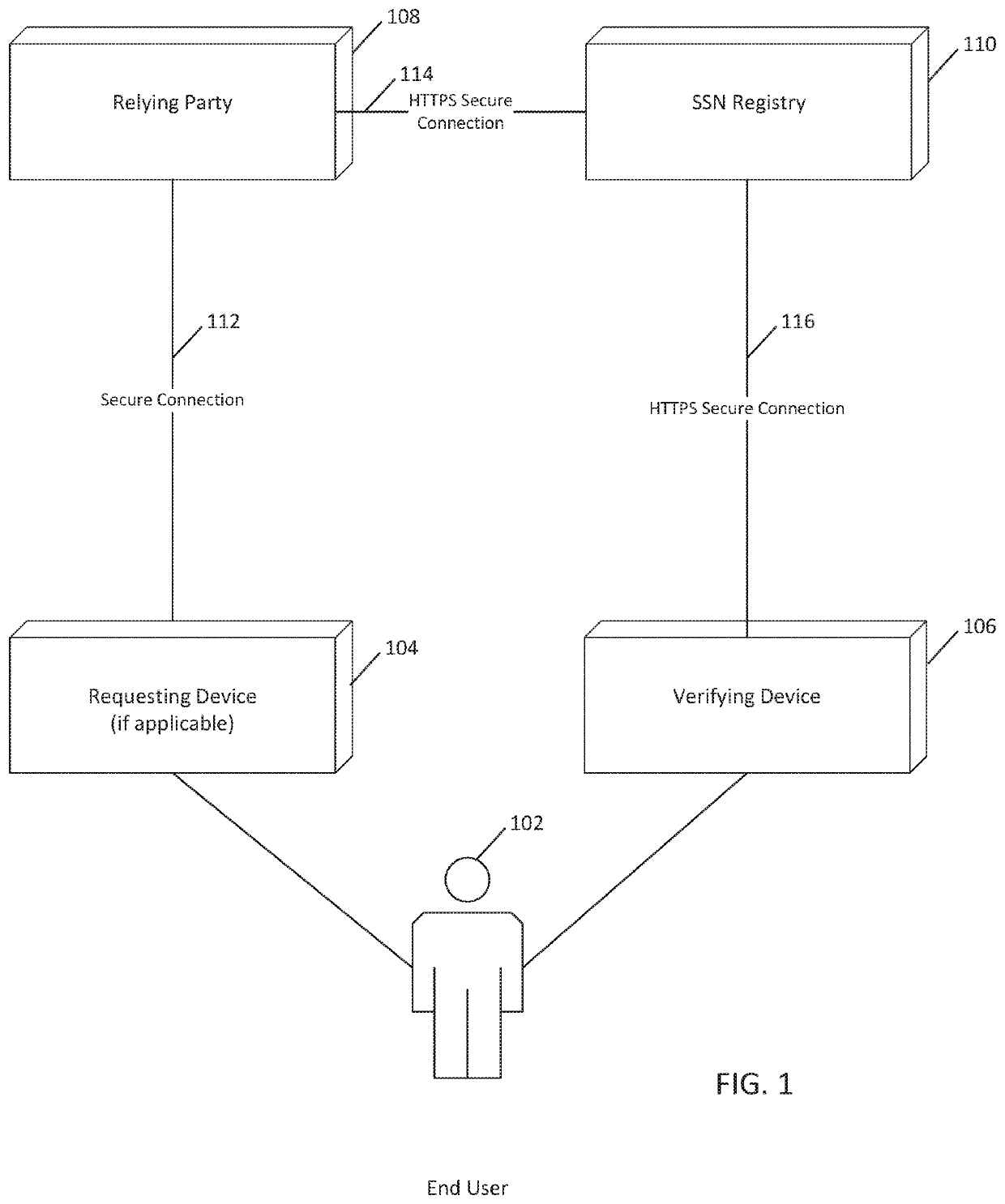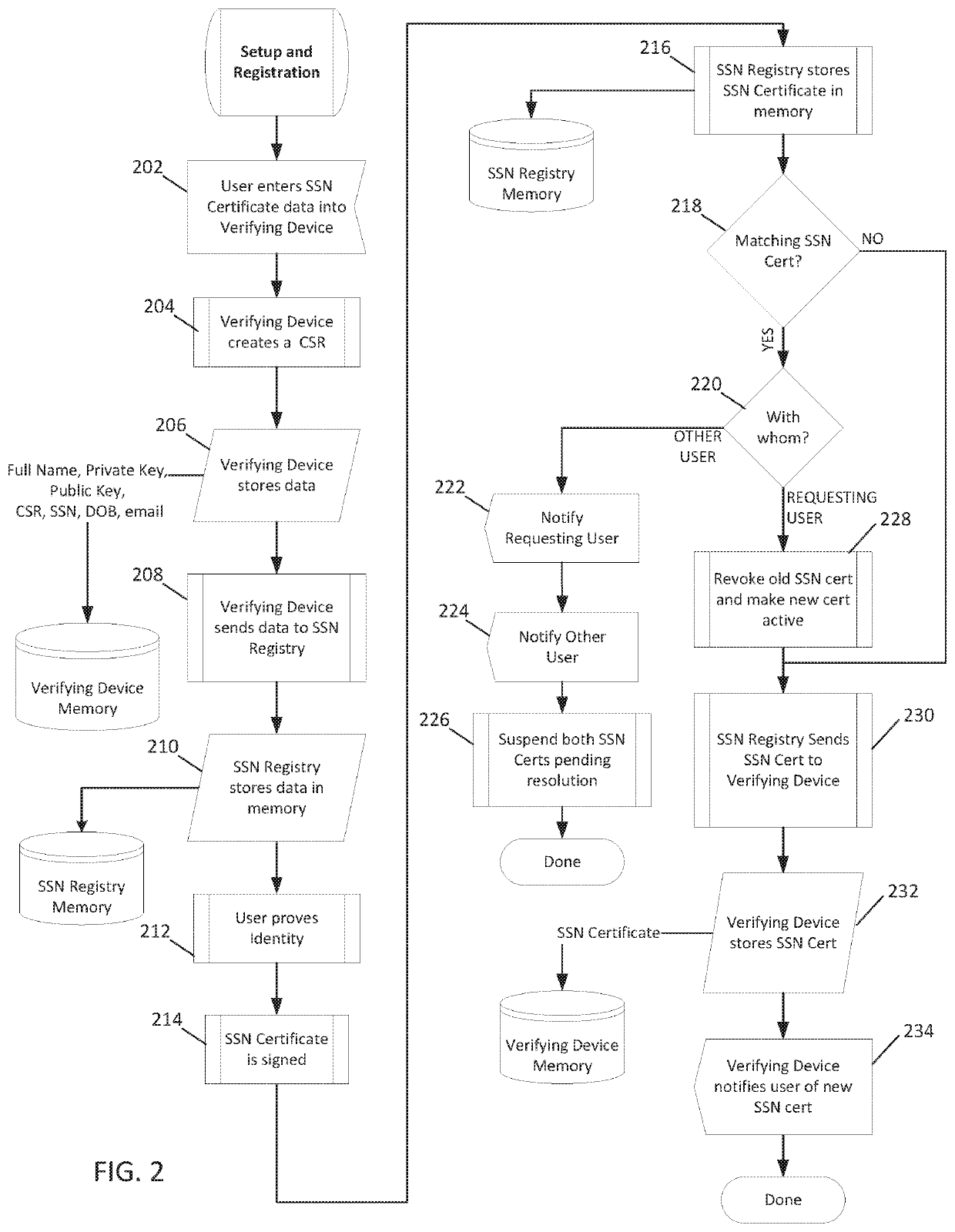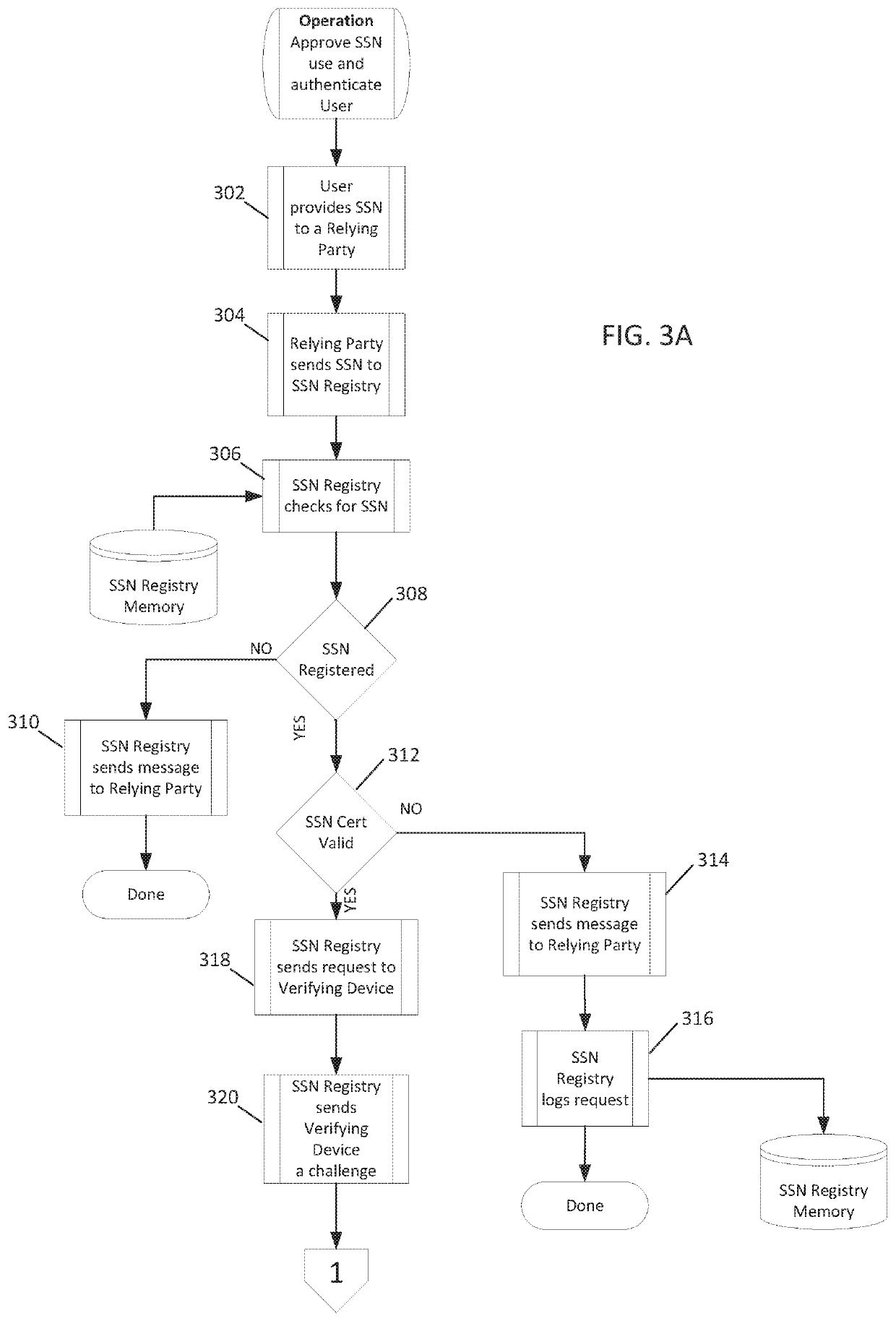System security infrastructure facilitating protecting against fraudulent use of individual identity credentials
a security infrastructure and identity theft technology, applied in the field of system security infrastructure facilitating protecting against identity theft, can solve the problems of child identity theft, identity theft has continued to rise according to ftc statistics, and excellent personal security measures cannot prevent identity theft from occurring, so as to improve the operation of network server authentication facilities
- Summary
- Abstract
- Description
- Claims
- Application Information
AI Technical Summary
Benefits of technology
Problems solved by technology
Method used
Image
Examples
Embodiment Construction
[0025]A networked server-based system infrastructure (see FIG. 1) and method (see FIGS. 2, 3A, 3B and 3C) described herein provide a networked server system with an enhanced level of security by enabling contacting an individual during an authentication procedure on the networked server, and thereby providing the individual with an ability to remotely approve or disapprove in real-time the use of his / her social security number (SSN) by the server. If use is approved, the infrastructure and method allow the server to remotely authenticate the individual's identity. Additionally, the networked server logs the activity associated with the SSN and allows the SSN owner the ability to view the log. It involves the following elements:
[0026]Turning to FIG. 1, an end user 102 is associated with an “SSN digital certificate” and a “private key” associated with it. The SSN digital certificate contains, in the illustrative example, at a minimum: a public key; a name of the owner, a SSN of the ow...
PUM
 Login to View More
Login to View More Abstract
Description
Claims
Application Information
 Login to View More
Login to View More - R&D
- Intellectual Property
- Life Sciences
- Materials
- Tech Scout
- Unparalleled Data Quality
- Higher Quality Content
- 60% Fewer Hallucinations
Browse by: Latest US Patents, China's latest patents, Technical Efficacy Thesaurus, Application Domain, Technology Topic, Popular Technical Reports.
© 2025 PatSnap. All rights reserved.Legal|Privacy policy|Modern Slavery Act Transparency Statement|Sitemap|About US| Contact US: help@patsnap.com



